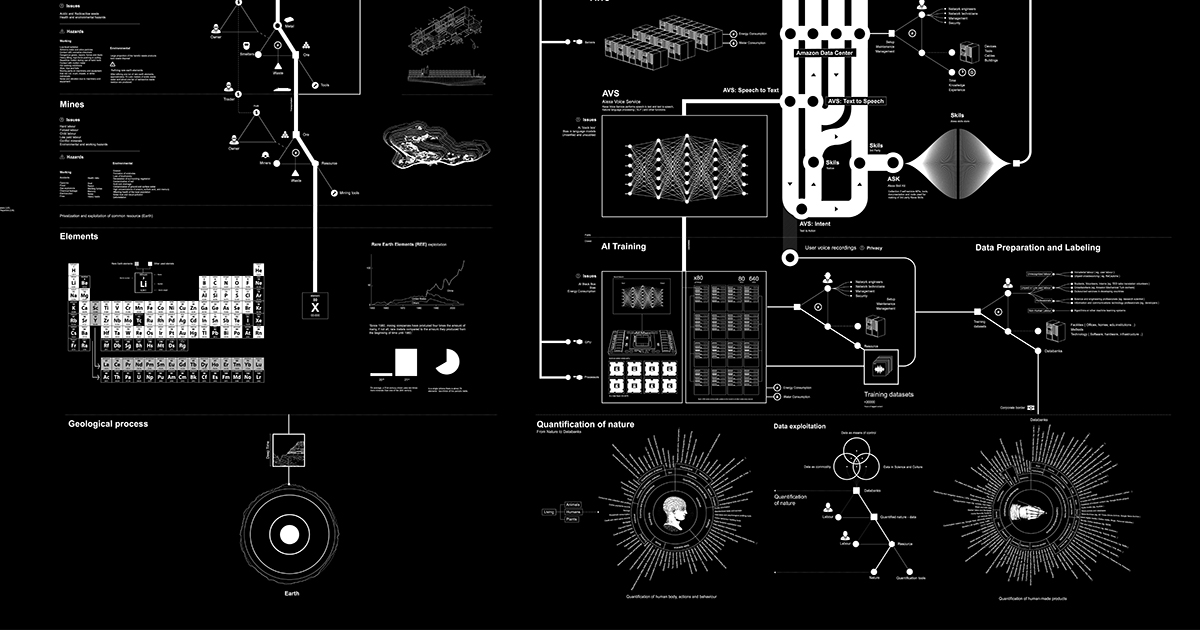Today’s Objective
In Week 5, students will delve into the materiality of AI, exploring the complex systems, data, and infrastructure that underpin modern AI technologies. Drawing from Paul Edwards's work, students will scrutinize the role of big data in climate modeling and understand the intertwined nature of technological and environmental systems. This week aims to provide a holistic view of AI's materiality, its role in scientific practice, and its broader social implications.
Lecture Notes
<insert slides link>
Key Concepts
- Infrastructure: The fundamental facilities and systems serving a country, city, or area. We can expand “infrastructure to mean “knowledge infrastructures” or technical infrastructures (from Edwards's "A Vast Machine").
- Materiality: The quality of being composed of matter; the consideration of physical and tangible components in analysis.
- Big Data: Extremely large data sets that may be analyzed computationally to reveal patterns, trends, and associations (from Edwards's "A Vast Machine").
To Read (Before Class)
Primary
- Kate Crawford and Vladan Joler’s "Anatomy of an AI System" (2018)
Supplementary
- Rob Kitchin's "The Data Revolution" (Chapter 2)
- Paul Edwards's "A Vast Machine: Computer Models, Climate Data, and the Politics of Global Warming" (Chapters 1-3)
Student Facilitation Reading
"Race After Technology: Abolitionist Tools for the New Jim Code" by Ruha Benjamin Race After Technology_ Abolitionist Tools for the New Jim Code-Polity (Chapters 1 & 5)
Summary: Benjamin's work challenges the notion that technology is neutral, exploring how racial biases are often embedded in algorithms. It provides an examination of AI's materiality from a critical and sociopolitical perspective.
Critical Questions:
- How does "Race After Technology" challenge traditional views of technology's neutrality?
- In what ways can biases become embedded in AI systems, and what are the potential consequences?
- How does this reading intersect with the discussion on the materiality of AI in the course?
- What solutions does Benjamin propose to address bias in technology, and how feasible are they?
- How might this work inspire a more equitable approach to AI development and deployment?
To Watch
What to focus on:
- Key Themes and arguments (List three)
- Critical Questions Think about this video in the following ways:
- As a Media Object: How and why was it made? Who is making it? How is it presented?
- As a Technical Object: What are the technologies on display and how are they analyzed. What method does the presenter use?
- As a public object: How does this video function in public? Who watches it and engages with it? How will the video be used?
- How might it apply to your work?
- How might it apply to other work in the field of AI or technology studies?
- What are the future implications and has the conversation changed since this was published?
